Text
Hunters Vs Wolves

Recent billboard in Northern Minnesota, paid for by the Minnesota Deer Hunters Association, Sep. 2023.
A Sign of the Times
This photo surfaced on Facebook in a Voyageur's Wolf Project post of a billboard paid for by The MN Deer Hunters Association, blaming wolves for the loss of 54,000 deer fawns every year in Minnesota. Using words like 'devour' and the sweet image of a young fawn, the billboard appears to argue for the management of wolf populations to protect Minnesota's deer herds - for the benefit of more deer available to Minnesota deer hunters.
The Voyageurs Wolf Project brings up several concerns regarding the legitimacy of the numbers on the board, which will further be explained below. This post will also explore the research of wolf predation on deer fawns, and wolf and deer ecology.
To begin, we will start by discussing number-hurling, one of the most common misused of scientific information in the media.
Number-Hurling
Number-hurling is the act of using a number, statistic, or other forms of data to support a claim. The difference between this and sharing scientific information is that not much (if any) further information is given.
Numbers without context are arbitrarily. Take this quote: "150,000 people die every day". That seems like a lot - until you consider that the human population on Earth is approaching 8 billion, meaning .001% of the human population dies every day.
With that in mind, the next question should be: what does 54,000 mean for deer in Minnesota?
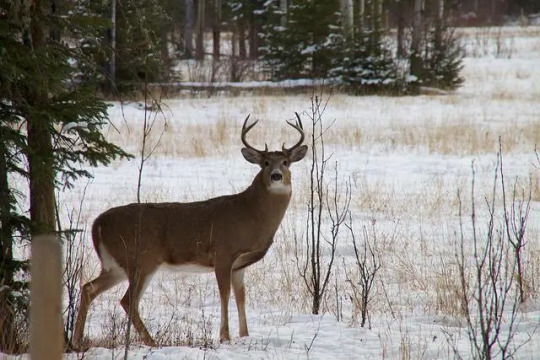
Deer, Deer, Deer
Most sources estimate Minnesota has a white-tailed deer population of about 1 million, give or take a ten-thousand. Since it is difficult imposable to count the exact number, most population information comes from statistical models and hunter harvest data.
Links to Deer Population information:
Deer Friendly
MN DNR website
AZ animals
This PDF talks more in-depth about estimating animal populations using methods like Plot Sampling and Distance Sampling. These methods involve surveying a randomly selected area for the animal. The number of animals counted is then divided by the survey area, presenting an animal density.
There are 86,943square miles in Minnesota. If we randomly selected 1-square-mile study areas across the state, and calculated 11.5 deer/square mile, that would give us about 1 million animals. The animals are obviously not perfectly spread out across the state, but we have a population estimate for statical purposes.
54,000 divided by 1 million and multiplied by 100 is 5.4. This means according to the billboard, wolves killed 5.4% of deer in a single year. But there's a problem with this math - the number 1 million references all deer, while the number 54,000 only refers to fawns. In order to find out what percentage of fawns are being killed by wolves in Minnesota, we have to estimate of the population of deer under 1 year old.
How Many Fawns are in Minnesota?
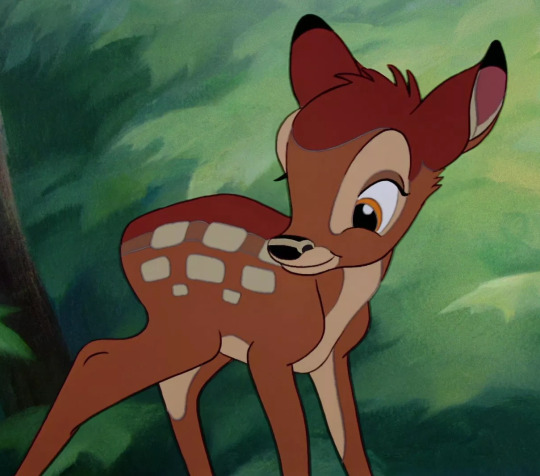
Disney's Bambi, 1942
The truth is - we don't know how many fawns are in state.
Fawn populations are more difficult to estimate than adult populations because fawns >6months old are very good at hiding. For the first couple weeks, a fawn's main survival method is curling up in the grass and hiding. Conducting any sort of survey to count fawns by hand is simply not efficient due to the number of fawns that would be missed.
A mature doe has 2 fawns per year on average (young mothers with smaller body sizes typically have 1 fawn, and older, healthier does have twins, or sometimes 3 - 4 in a single spring). So, why can't we multiple 2 fawns for every adult female deer? We don't know the number of female adult deer either.
Even if the sex ratio of a population was 1:1 (one male for every female), we don't know how many of those animals are mature. If we tried to multiply 2 by half of the population, we would be assuming that female fawns are also giving birth to two fawns. The ratio is most likely not 1:1 either. A healthy deer population has more females than males, since they reproduce polygamously. (More males than females leads to more reproductive competition, which could reduce survival rates of mature bucks).
For Heaven Sakes - What DO We Know?!
We can estimate fawn survival rates. This website from the University of Georgia talks in depth about whitetail fawn research and methods.
A common tactic is to use VIT's on mature does during the winter. In the spring when the doe gives birth, the tracker falls out and sends location data to researcher. Using the data, researchers find the newborn fawn, take measurements, and fit it with a radio collar to monitor it's movements. The collar expands as the fawn grows, and if the fawn survives after the study ends, the collar falls off. If the fawn dies during the study, the collar sends out a mortality signal after a period of non-movement.
Read more about fawn mortality studies and how they impact fawn survivability here.
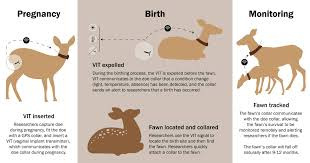
These mortality studies cannot be used in estimating fawn population for a couple reasons.
The location the fawns are found at is not random. The randomized selection of study areas prevents skewered data. If we count deer at a known feeding location, and use that survey data to estimate the population of other locations, that data would reflect only the area where deer are being feed. In other words, the population estimation would read as if deer have food everywhere - which they do not. Food resources are not equally distributed everywhere. There are places animals go often and places they avoid entirely. Randomized location provide a middle-ground. In monitoring surveys, the priority is to collect as many fawns as the survey needs. Researchers will purposefully choose locations they can catch the most does (over bait, at a water source, along prime bedding and feeding habitat).
There are a limited number of fawns. Part of the goal of a survey is to count as many animals as possible. In mortality surveys, the opposite is true - use as few animals as possible. Wildlife research is bound to the same laws and guides as laboratory animal research under the Institutional Animal Care and Use Committee (IACUC), along with state and federal regulations. The goal of any research project regarding animals is to be as non-invasive as the study allows, and use as few animals as possible, or substitutes for live animals whenever possible. Read more about the 3R's in Animal Research.
HOWEVER - data from fawn mortality studies can give us information about wolf predation.
This paper from the US Geological Survey looks at mortality rates of white-tailed deer fawns who were predated on by wolves and black bear in Minnesota in 1994. In this study of 21 tagged fawns, 51% were predated on by wolves, and 49% were predated on by black bears. This paper from Todd Fuller also points to wolves being the biggest cause of mortality on the sampled fawns.
Natural Selection At Work
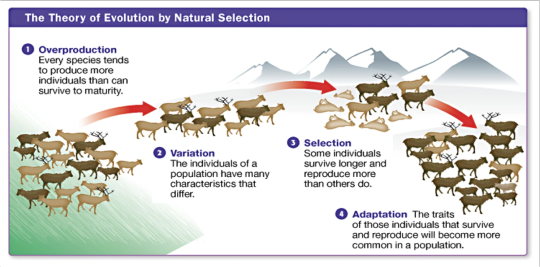
Overproduction example in caribou
By now, we've all heard of Charles Darwin and his theories of evolution and natural selection. Part of natural selection regards overproduction.
Sea turtles, rabbits, insects, and fish are all examples of animal that produce more offspring in a single breeding event than can reasonably survive. This overproduction is a natural remedy to predators who will eat the excess offspring before causing a dip in the population.
This is why researchers make a distinction between fertility - the number of young that are born to an individual, and recruitment - the number of young that reach sexual maturity. As cute as those baby animals are - they don't do much for a population until they reach the age they can breed. If a population is decreasing, fecundity, fertility, and recruitments are all factors that should be investigated.
With all that in mind, we have no idea what the population of deer fawns is in Minnesota, therefor, the number 54,000 can not give us any information, aside from the fact it is only 5.4% of the total estimated deer population.
Where did 54,000 come from?

Photo from the Voyageurs Wolf Project Trail Camera
According to the International Wolf Center, there are about 2,699 wolves (give or take 700) in Minnesota as of the 2020 Wolf Survey. We could estimate the number of fawns killed by wolves by multiplying the number of fawns an individual wolf kills by the total number of wolves. However, as the Voyageurs Wolf Project points out, that is also a difficult number to figure out.
According to a Wisconsin News article, wolves kill 17 - 20 deer per year (no distinguishment made between fawns and adults). This study from Northern Michigan University claims 12 wolves killed 217 fawns over the course of 4 years. That means that each collared wolf ate 18 fawns - over the course of 4 years. Just for laughs, if we assume each individual wolf killed the exact same amount of fawns every year, that means that one wolf killed 4.5 fawns in a single year.
Search "how many fawns do wolves kill a year" and you will find a string of news articles with 'he-said-she-said' quotes and blog threads of passionate deer hunters. When it comes to raw data from researchers in the field, the answer becomes illusive. The fact that non of these estimates repeat is as big of a red flag as you can get in the science world, as reliable experiments have repeatable data.
In their post, the VWP referenced a paper that estimated wolves killed 17-20 fawns in Upper Michigan. If there are 2,700 wolves in Minnesota, multiply that number by the number of fawns killed, and you get 45,900 - 54,000. The billboard strictly assumes that each wolf kills 20 fawns per year. However, the statistic of 17-20 fawns per wolf was pulled from an article that made no distinction between fawns and adult wolves. Not only is the 54,000 based on questionable sources, but the sources it is pulled from makes it unreliable for not distinguishing between fawns and adults.
Every Year, a Wolf Counts to Twenty and then Stops
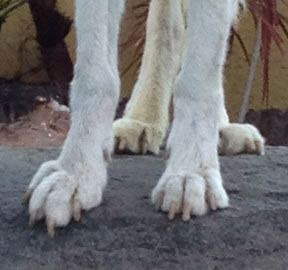
Funny enough, the billboard leads one to believe that the number of fawn killed by deer each year is a static number. It is not. How many fawns a wolf kills changes year to year, and depends on multiple factors.
In their own surveys of wolf kills, VWP saw breeding pairs kill more fawns than single wolves. This makes sense - breeding animals require higher calorie intact while pregnant and nursing.
It is also well-known that wolves change their predatory behavior depending on resource availability. In late summer, fawns are strong enough to follow their mothers instead of hiding, so wolves in northern Minnesota will turn to eating beavers, fishing, and even eating berries. Late summer is a particularly lean time for wolves, and is when most wolf pups die of starvation. This paper from Scandinavian research on wolves hunting moose determined that the age of the breeding male was a significant factor in a hunt's success, meaning older adults have more experience.
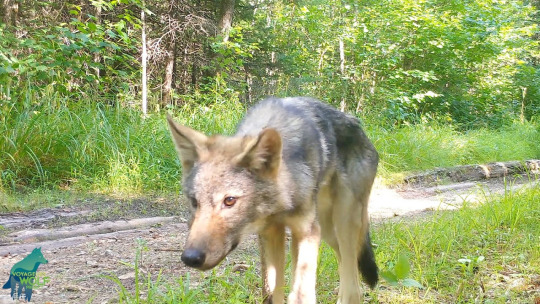
Lean Summer Pup, via Voyaguers Wolf Project Trail Cams
One important factor in fawn survival to consider is the health of the mother. Though they are born precocial, fawns are highly dependent on their mothers for the first couple of months on their lives, and typically stay with their mothers for their first year. Not only are they given food and groomed, but they learn foraging behavior and predator avoidance. This article goes into dept about how maternal health and dominance can affect survivability of fawns.
Another variable to consider is habitat. Deer can live in a wider variety of habitat that wolves and other predators can. Wolves, black bear, and mountain lions prefer habitat away from busy metropolitan areas, whereas deer can live in wooded patches of suburbs in the middle of a small city. Fawns living in these areas would not be predated on by wolves because there are no wolves around (though there are coyotes). This article talks more in depth about the different mortality rates of different habitat types of whitetail deer.
In Summary

While its known wolves consume a lot of fawns, their predation rates on fawns change through out the year, and vary by habitat, season, and experience. Fawn survival rates are also influenced by environmental factors and the health and dominancy of the mother.
The number of fawns killed by wolves each year is not a static number. There is little evidence to defend 54,000, and even if it were accurate, it is insignificant since the population of fawns and the birth rate of fawns in the state of Minnesota is unknown.
Wolves killing deer fawns in Minnesota is only one line in a vast ecological web. No single factor has ever been recorded causing a significant decline in a species. When a species is declining, there are always multiple factors at play.

Deer vs Vehicles
According to the MN Office of Traffic Safety, between 2016 and 2020, there have been over 6,000 vehicle collisions with deer on the road. 1,000 of those incidents involved serious injuries or fatalities to the people in the car.
The MN DNR website says in 2022, the harvest report was 170,000 deer taken by hunters - which is also 7% lower than the harvest rate of 2021. Even then, that number is significantly higher than 54,000.
The billboard also mentions nothing about the predation of black bear and coyote on deer and fawns. Coyotes are significant because unlike wolves and black bear, they can live closer (and even within) city limits, meaning they can affect deer populations in places wolves and bear cannot.
The Bigger Message
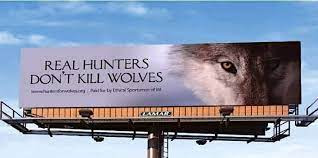
The opposite of the previous billboard.
The purpose of this post is not to villain-ify the MN Deer Hunters Association or glorify wolves, but to encourage people to ask bigger questions when being thrown vague information.
**Opinions Below**
Wolves serve a role in the ecosystem that no other species, including humans, can fulfil. While they should not be evicted from the landscape, this doesn't mean hunting them should never be allowed.
As important as wolves are, they do often cause conflict over livestock, and people's general fear of the animals. Allowing controlled hunts may mitigate potential conflict as well as reinforcing a fear of humans - a thing that may help keep the species alive.
The bottom line - whether or not we hunt wolves is a decision based on our values of wildlife. We need to ask ourselves: what is important to me? Why do I think that is important? What is the information I base my values on?
Answering those questions is the first step we can all take to protect ourselves against number-hurling and make informed decisions about ourselves and our world.
#wolves#wildlife#wolf#wolfpacks#animals#carnivors#science#ecology#research#wildlifebiology#biology#nature#deer#white tailed deer#minnesota#ecosystems#biodiversity#conservation#long post#long reads
1 note
·
View note
Text
Journal Highlight: What Determines a Successful Hunt for Wolves?
#biology#science#wildlife#animals#wolf#wolves#wolf pack#moose#deer#roe deer#scandanavia#nature#research#interesting#education
0 notes
Text
How to Keep an Indoor Cat Happy
Presented by Jackson Galaxy, Cat Expert
youtube
Points of video:
Cat-ify your home - give them places to climb, vantage points, and multiple pathways to cross rooms.
Build a cateo - an enclosed outdoor space where your cat can experience the outdoors safely.
Play play play with your cat!
Clicker training
Harness training - take your cat on walks!
Consider getting your cat a friend! If adopting a kitten, you may want to adopt two.
Keep a routine with your cat - feed/play at a specific time
Spay/neuter your cats! This will take care of their hormonal drive to propagate and fight with outdoor cats.
And of course - Spend time with your cats!
Jackson Galaxy has a Youtube channel with lots of videos on training, care, and facts about cat biology and behavior!
6 notes
·
View notes
Video
youtube
(via Northern Minnesota researchers find treasure after sorting through 7,000 wolf poops)
Researchers in Voyageurs National Park in northern Minnesota had collected a total of 7,000 individual wolf scats since 2015. Read the full news article here.
An animal’s scat can reveal a lot about an animal’s diet and physical health. Scat and droppings can also be used as sign to identify animals.

If you’re not afraid to pick it apart, you can find traces of what an animal last ate in their feces. Wild carnivores will have bits of hair and bones, and wild canines may even have berries and fish scales. Domesticated dogs will usually have kibble. Omnivores and herbivores may have berries, nuts, and other plant matter.
Just remember to wash your hands after!
1 note
·
View note
Quote
We Build Ourselves from Soil, then Turn Around and Call it Dirt

#enviromental#enviromentalism#wildlife#science#earth#earthscience#soil#soil science#ecology#inspiration
0 notes
Text

October 28, 2021 - Tawny-browed Owl (Pulsatrix koeniswaldiana)
These owls are found in open woodlands in parts of Brazil, Paraguay, and Argentina. They are nocturnal, hunting from perches in the canopy for small mammals, birds, and large insects. Nesting in cavities in trees, females incubate clutches of two eggs. Both parents feed the chicks. Though they are classified as a species of Least Concern by the IUCN, their population is declining due to habitat loss.
216 notes
·
View notes
Text
How wolves deal with their human neighbors
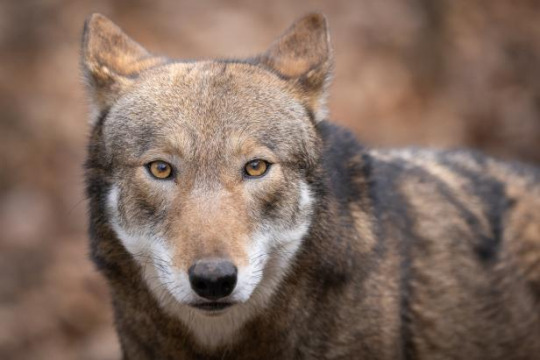
Full research article: Habitat selection of a large carnivore, the red wolf, in a human-altered landscape
From 2007 to 2010 on an island off of the coast of North Carolina, 17 juvenile and 17 adult red wolves (Canis rufus) were captured using foot-hold traps and fitted with a radio collar. The goal was to study red wolf habitat selection in an areas of both high and low human density, ultimately to aid the conservation and management of the highly endangered large predators.
**The article goes into depth about how wolves were classified by age, how data was mitigated for biases, information about the study area, and how habitat types were classified into unaltered and human-altered landscapes**
What the researchers found (based on their data collected) was that red wolves changed the kind of habitat they selected for based on human density. In areas of low human density, wolves were more likely to select habitat near roads and agricultural (human-altered) lands. In areas of higher human density, roadways and developed lands were more often avoided for previously ‘second-choice’ habitat types.
Ultimately, the results are optimistic for large carnivore conservation, as if provides evidence that red wolves may be able to adapt to surviving in a mosaic of human-altered and natural lands.
This type of research is significant, as unaltered habitat types are declining. Many large predators (wolves, cougars, grizzly bears) depend on large plots of land for food. Expansion of agricultural and developed lands means predators either figure out how to live in them or perish. Knowing that red wolves can adapt to more fragmented habitat is one step forward in their conservation. The rest comes down to mitigating wolf and human conflicts, and ultimately gaining public support for wolf conservation - which is a whole different, ugly battle.
217 notes
·
View notes
Text
Understanding Economics, from Marilyn Waring
Marilyn Waring demystifies the language of economics by defining it as a value system in which all goods and activities are related only by their monetary value. She claims that monetary exchange with results in unpaid work—usually done by women—is unrecognized, and activities that may be environmentally and socially hazardous are regarded as productive. With irony and intelligence, she maps out an alternative economic vision based on the idea that time is the one thing we all have to exchange. Shot in Canada, New Zealand, New York City, the Persian Gulf, and the Philippines, this classic film is an entertaining primer for anyone who suffers from what Waring calls “economics anxiety.” (94 minutes)
https://fod.infobase.com/p_ViewVideo.aspx?xtid=52054
0 notes
Text
Indigenous people have the right to withhold historical knowledge:

More people should understand this.

2 notes
·
View notes
Text
Earth’s History Explained by a Football field.
When talking about the Earth’s history, we throw big numbers around - a million, a billion, 400 million. Have you ever taken a minute to consider just how big those numbers are? Think about a single year. 365 days. 12 months. Looking back, they seem to fly by, but as you sit here and read this, a moment can last forever, and events you have in the future, for instance, and trip planned for next year, may seem like it will never come. Think of all the things that has happened to humanity in the hundred years between 1900 and 2000. The invention of electricity, two world wars, putting a man on the moon, the internet. Can you image two hundred years? For hundred? How about a million? This video really puts in perspective what those numbers mean, and (roughly) what the history of the Earth looks like.
youtube
0 notes
Text
Learn about Wildlife from Trail cams
Are you curious about the animals in your neighborhood? Do you keep seeing a mysterious set of tracks by your house? Have a large patch of public woods nearby? Get a trail cam!
Trail cams are a great way to learn about your local wildlife. They are available at most major outdoors shops, and come with all sorts of options such as night vision.
You can learn so much about animals that you otherwise can’t get close to. Date and time stamps allow you to know exactly when an animal passed through. If you really know your stuff, you can upload the data into a program like R that can turn the data into graphs to show activity peaks of certain animals (knowledge of coding is helpful).
But you don’t need to be an expert to buy a trail cam, set it up, and learn from the photos. Trailing cam are especially helpful for hunters or trackers, or if you just want to practice identifying tracks. As long as the photos are clear, you can identify an animal and then study the tracks or trail it left behind!
6 notes
·
View notes
Text
Mouse predation on Laysan Albatross
youtube
Mice and rats were introduced to Midway Island in the Hawaiian archipelago by navy ships. At first, it was the rats that were attacking the birds until researchers and wildlife managers put forth a successful obliteration attempt. Now, only invasive mice are left, originally thought to not be a problem to the nest colony were 95% of the population of Laysan Albatross nested. But a recent discovery of strange bloody marks on birds presented a new problem of mice. Another removal plan was created to protect the colony set to start in 2020, but was halted by the pandemic.
0 notes
Text
Black-Footed Albatross Chicks saved from a rising ocean
https://vimeo.com/hilittlebird/albatross
vimeo
1 note
·
View note
Text
Baby Cuckoo throws it’s competition from the nest
youtube
Cuckoo birds are brood parasites. Adults never build a nest of their own. Instead, they lay their egg inside the nest of another bird, and let those parents care for it. This is beneficial on to the adult cuckoo, now that it doesn’t have to spend the resources and time to care for the young. However - cuckoo’s are large birds. The young needs a lot of food. To get enough food, the young bird has an instinctual 2-part plan:
Push out the eggs (or sometimes nestlings) from the nest, and
Excessively signal the adults to constantly bring it food. (If the adult only receives signals from one cuckoo nestling, it will only bring food for one bird, which won’t be enough for the large chick. These bird’s will mimic the sound of multiple chicks, to trick the adult to bring more food, that all goes to one bird).
This video may be harsh and disturbing to some, but this is the reality of nature. The baby cuckoo is not a ‘psychopath'’ or a ‘murderer’, it is simply following its instincts to survive. It is just being a cuckoo bird. More people need to understand this.
FYI, don’t read the YouTube comments under the video. Just...save yourself.
4 notes
·
View notes
Text
Is it time to give parks back to the Natives?
The Atlantic published an article by David Treuer.

https://www.theatlantic.com/magazine/archive/2021/05/return-the-national-parks-to-the-tribes/618395/
3 notes
·
View notes
Text
Why is Biodiversity important?
This Earth Day, I thought I’d bring attention to the biggest concern in the field of wildlife.

All our ‘issues’ in wildlife - agricultural monocultures dominating the landscape, deforestations, loss of wetlands, invasive and feral species, extinction, soil erosion, climate change - circle back to one major issue, loss of biodiversity.
Biodiversity is simply the number of different species in an area. Earth as a whole has great biodiversity from the poles to the ocean, but biodiversity naturally varies between habitats. The rainforests along the equator are naturally more biodiverse than the tundra, because there are more resources available.
Over the past centuries, biodiversity has taken a steady trend downward.


A search on Google will pull up multiple graphs, come measuring tree coverage in an area, some counting species in another. There’s not really one graph that can show the decline of biodiversity on Earth, because that’s such a big job! Instead, we look at local trends over the years, and compile their data. Biodiversity loss can be found on all places on Earth, and like I said earlier, it has multiple causes.

But why is biodiversity so important?
This is a fair question. Biodiversity loss means birder’s and hunters and hikers will see less wildlife while recreating, but what does that mean for people who don’t do those things? Why should non-nature lovers care about less animal species on Earth? After all, people in big cities don’t encounter much wildlife anyway, right?
Wrong!
Your very existence is based on available resources of the present and past. Your ongoing existence depends on the function of ecosystems. Humanity is, and forever will be reliant on ecosystem services.
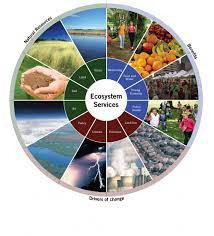
You’ve probably heard about agriculture and pollination in school, but there is so much more. Water filtration, air filtration, waste decomposition, climate stabilization - all very essential things. How exactly does biodiversity play into this? Well, it’s a system the size of a planet, so it’s complex. Hold tight.
The Nutrient Cycle.

The first step in understanding the importance of biodiversity is first understanding the nutrient cycle. There is where we get the stuff that makes us us! Carbon is the molecule on which all life is based thanks to its niffy 4-bonds. It comes from the soil and eventually into our food and into us. Calcium, the stuff our bones are made of, comes from the soil. Sodium is essential for life - again, from the soil. Of the 40 trillion cells (and additional bacteria and microbes) that make up our bodies, each one it made out of something. It needs the basic lipids, proteins, and nucleoids (DNA/RNA) to be formed and maintained. Those raw materials and atoms all come, one way or another, from the soil.

Now, obviously we don’t just go outside and shovel dirt in our mouths. A lot of the essential nutrients in the soil are not in the right form for our (or any animal’s) body to use. They need to undergo a chemical change. This is where plants come in. Most of the raw essential nutrients in the soil are ready picked up in plant roots.
Now - some plants specialize in different nutrients. You may have heard legume plants actually put nutrients back into the soil, which is why farmers may plant them after a few seasons of planting a crop like corn or wheat. Those crops take specific nutrients out of the soil, and put back others. But, if the same plants are left growing in the soil too long, eventually, the only nutrients left will be those the plants can’t take up. This issue arises often with monocultures.

(Think about a room with no ventilation. The people in it will breath in oxygen and breath out carbon dioxide. If nothing in the room is bringing in more oxygen, or filtering the carbon dioxide, eventually the carbon dioxide will fill the room, and there’ll be no oxygen left to breath). The same concept works for the soil. This website dives deeper into plants and how they take up nutrients.

Any gardener knows, you can’t just put a plant anywhere and expect in to grow. Plants co-evolved with the land, meaning they can only grow in specific soil types. There are three main types of soil, categorized by the size of the individual partials. Most soils are a mix between these three, categorized by the proportion of those three soils present. I won’t lie - soil science gets complicated. You won’t need to understand everything, only how it is essential to biodiversity.

(In my blog, you’ll find videos of soil scientists talk about their studies, and how we can increase nutrients. Some can be a little technical, but you’re guaranteed to learn something).
Particle size effects how well soil can stick together, hold water, oxygen (yes, roots need oxygen) and other gases, and how easily the roots or other animal can burrow through the soil. (Consider walking bare foot on sand versus clay, which one will you sink deeper into?)
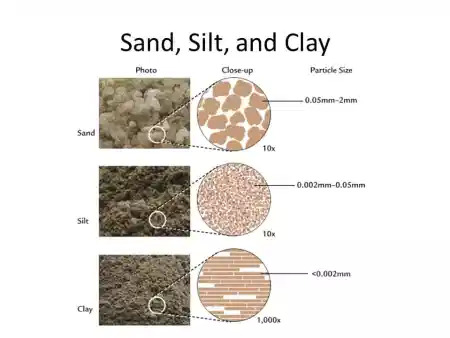
All these factors in soil determined what kind of plants, insects, and soil microbes can live in that area. The presence of animals like worms, burrowing beavers, and groundhogs can even aid in soil possesses by loosening up the soil, introducing oxygen, water, microbes, and more nutrients. (Except in those places like Minnesota where ecosystems have formed without earthworms, and the introduction of them has hurt soil health). Soil is a whole ecosystem of its own, with symbolic relationships, parasitism, predation, and competition that erupts on the surface as plants to provide us nutrients.

Out of the soil into the plants. Now what?
Biodiversity and health of our soils is very much the building block of life on earth. All the plant life it supports is the next step. In many cases, without roots to hold it in place, soil cannot stay on the landscape.

Erosion is the process of loosing the grains of silt, sand, and clay, commonly after the soil looses it’s organic matter, moisture, and root structure. It is common by riverbanks where plants have been removed, and the constant current of the river chips the banks away. It can also happen by wind and rain in farming fields where livestock have grazed too heavily, or the soil has been used to heavily for crops without time to restore nutrients. Loss of the prairie grasses, intense tilling without crop rotation or cover crops, and a long drought caused the Dust Bowl.
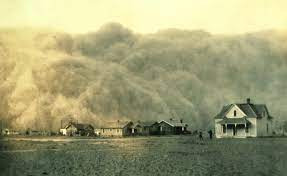
Before the farmer’s plow, the prairie grasses of the US had evolved to withstand long periods of rain and drought. The grasses tangling roots held the soil in place and collected and stored water. Bison, antelope, wolves, foxes, and ground-nesting birds continuously moved across the landscape, depositing nutrients. The pioneer’s present on the landscaped disturbed this system with unhealthy farm practices, fencing, and predator removal.
Today, we are starting to understand the importance of no-till farming techniques that reduce erosion and even restore soil health.

By rotating the crops (changing the species of crops grown every season or so), laying down cover such as much, planting crops to cover the soil even in the winter season, planting multiple crops at the same time, and letting field rest and go fallow, farmers are saving soil one field at a time. One problem is many farmers are resistant to changing their practices. Farming is a risky business - all your time, effort, and money, are put into this thing. If it fails, you don’t get any benefits, and you can’t even switch profession, because you don’t have a wide variety of skills. Soil scientists and wildlife biologists are working on education to help farmers transition to healthier methods.
What About Wildlife?
Okay. Now we know a little about the soil and agriculture. We know that the soil has nutrients, the go into plants, we eat the plants, and then our waste going into our plumbing to never be thought of again. Simple, right?
It is simple - too simple. Let’s compare the system we know today with something a little older.
Let’s imagine a tiny molecule of - anything. Imagine it’s any essential nutrient, calcium, carbon, sodium, etc.. Imagine is a tiny spec settled in the middle of a mountains. As thousands of years pass by, the mountain gets smaller, chipped away by wind and rain.
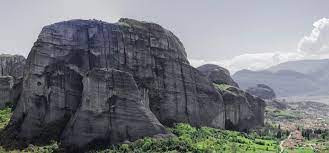
Eventually, after a long long time, our little spec reaches the side of the mountain. A heavy drop of water finally dislodges it from the mountain and it ends up on the forest floor. It may sit there for a while, being pushed around by wind a ran, until something like a mouse comes along, and it sticks to the bottom of it’s foot pad. The mouse does it’s usual mouse routine, and dives into a nearby burrow. The spec is unstuck, and not sits under the Earth. An earthworm, or a beetle then burrows past, pushing it deeper into the soil, straight into a net of roots. Over the next hundred years, the spec is pushed around through the systems of a variety of bushes, grasses, trees, bacteria, and microbes. Occasionally, while inside a plant, the spec may be ingested by a grazing animal like a rabbit, a goose, or a deer. If those animals are migratory, the spec may travel hundreds of miles, either to highlands, or by low river basins.

Most of the time, the spec is deposited in the animal’s droppings, and broken down by insects, fungus, or plants, back into the soil until it is picked up by another plant. Sometimes, when the spec returns to a herbivorous animal, that animal is predated upon. The spec now travels through raptors, bears, wolves, cats, and meso-predators like foxes, mink, and others. The spec may be deposited in the fecal material, or stuck in the animal while it dies, and it’s body slowly broken down. So on and so forth, the spec traveling hundreds of miles across continents and ecosystems in thousands of different ways. Eventually, it may be introduced to an aquatic system, into ponds, lakes, or rivers that wash out to sea. The system is just as complex as the terrestrial one, traveling through different fish, invertebrates, and mammals. Maybe is washes up on show by turtles or a dead whale, and is carried back to land by gulls. One day, the spec ends up at the black bottoms of the ocean, beyond the reach of any current or creature able to use it. It will sit for an eternity, moving over by the incomprehensibly slow push of the continental shelves back inside the Earth. One day, it will return to the surface as magma, in a system now filled with new creatures.

Pretty neat to think about, right? This process is happening right now - with all sorts of particles. Once those particles hit the bottom of the ocean, they’re not returning anytime soon. Tectonic plates move at a rate of 1-2 inches/year. Below is a demonstration of how big the tectonic plates are.

How long do you think it would take particles to move across them, before being pushed down into magma or up into mountains?
The greater diversity of species on the landscape, the longer those nutrients can stay in the system. Think of monocultures like a corn field - the nutrients in the soil are picked up by corn stalk after corn stalk, until it is time for harvest. Most corn grown in the US is feed corn, so now the nutrients go into cows and chickens, their manure used to fertilize more corn. The meat products are packaged and shipped into towns across the US. Not long after purchased, the nutrients go into a human body and resurface again 24 hours later, only this time, into pluming systems. They will pass through a sewage treatment plant, and either turned into fertilizer (to grow animal feed) or released into an aquatic system. The trip for the molecule is cut significantly shorter. Don’t believe me? Check up the mouth of the Mississippi River.

This is what’s known as the “Dead Zone” of the Gulf of Mexico. Dead zones happen worldwide. Simply put, there’s caused by too many nutrients dumped into one place. It’s so much so fast, most organism cannot break it down. Most of it is nitrogen and phosphorus, from the soil of the Corn Belt. (My professor likes to say ‘most of Iowa is now in the Gulf of Mexico”). This surge of nutrients causes toxic algae blooms that make it impossible for other things to live in the same area. These blooms occur naturally, but are usually limited by the amount of nitrogen and phosphorous. Thanks to human agriculture, the algae is no longer limited.
Okay, I understand why biodiversity is important. What can we do?
Firstly: protect what biodiversity we have left.

(Soldiers guard the last two female white rhinos from poachers).
But this doesn’t necessarily mean saving everything. it means slowing changes caused by humans.

For example: feral mustangs in the Western US and Australia threaten plant biodiversity and ground-nesting species in delicate ecosystems that have not evolved to accommodate them. Unfortunately, strong human emotions in the US around the ‘spirit of the west’ halt efforts to manage them, and they are even protected from lethal removal by the Wild and Free-Roaming Horses and Burrows Act.
In the US, horses, boars, sparrows, Norway rats, starlings, and feral cats and dogs also impact diversity for species already greatly stressed by pollutants, habitat loss and fragmentation.
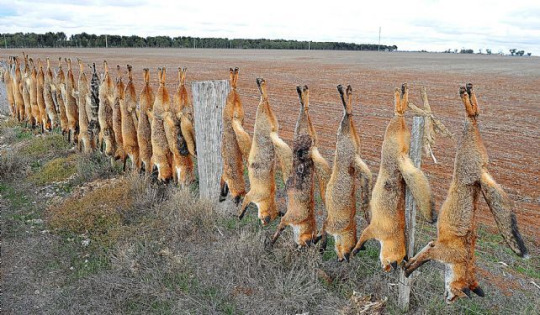
While Australia is renown for it’s unique wildlife, it also has a host of exotic invasive species introduced by colonizers - some accidentally, some purposefully to control other invasive. Among the invasive are cane toads, rabbits, foxes, cats, horses, and camels.
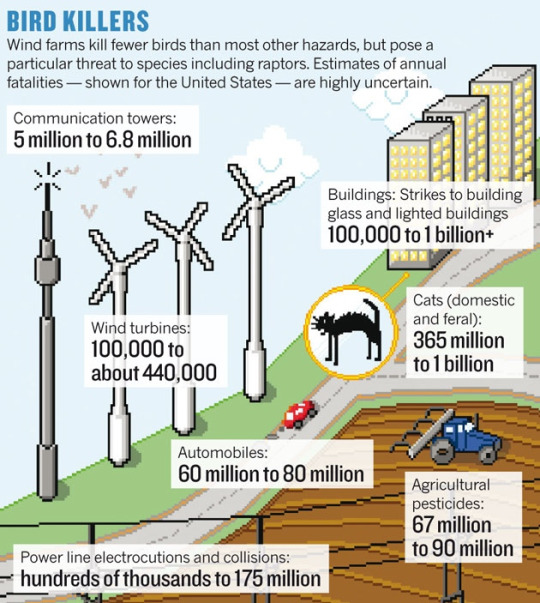
Feral cats can be a hot subject. Those opposed of outdoor cats rightly claim cats kill millions of birds, while supporters counter-argue that wind turbines kill more. The premise of this whole argument is wrong: people kill birds, and we do it in many different ways including agriculture, building strikes, and allowing feral cat colonies to exist. We can help wild birds by putting stickers on buildings, using less chemical pesticides and fertilizers, and keeping our pet cats inside.
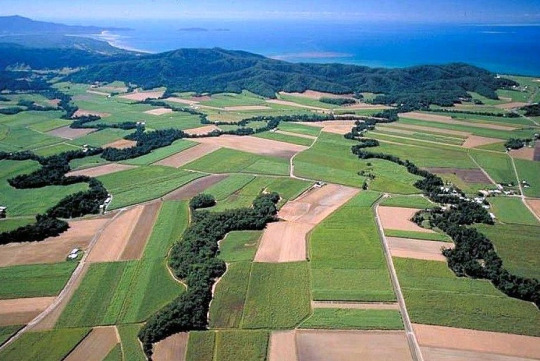
Now, saving habitat for animals is obvious, but what’s less obvious to people is it means more than saving a stand of a couple trees. The patches in the picture may look ecofriendly, and may serve as habitat for some birds and small mammals, but in reality, they are very small and fragmented. Some animals can be very particular about the habitat they choose - these are called interior obligate species. Species like this only live in the deepest part of a habitat, away from any sort of edge or man-made structure. Habitat edges are any place two habitats meet, like the forest and a field. Some animals, like deer and turkey, can live in these edges, but generally speaking, a habitat should be a majority interior and the rest edge. What constitutes interior? Measure the height of trees on the outside of a forest, and multiply it by three. With that number, go from the outside of a forest inside until you’ve reached the same distinct. If there is still forest, it is interior. The patches in the picture above have very little interior.

Roadkill can be a common sight in some places. I’ve seen deer, raccoon, foxes, and rabbits, but what you never see are the animals who refused to cross the gap. The road may not be hard to cross for a deer, but to a tiny songbird, reptile, and amphibian, it may as well be a mile. If the cars don’t kill you, odds our a predator will. (Predators are keen on habitat edges as places to find food). Without the ability to travel between patches, a small population can quickly be wiped out by disease or predators (think about a fox in a chicken coop vs a fox in the woods). Habitats can be fragmented by roads, pipelines, buildings, mines, fields, powerlines, and rivers. Now, I understand some of these things are essential, so all we can do is be mindful of where we build, and make accommodations when necessary. Not long ago, a land-bridge in Colorado made national news when trail cams spotted all sorts of animals using it to cross a highway.


This isn’t everything by a long shot, but this post has become long enough, and I hope I can get you all thinking. If there’s any specific topic you would like me to cover, post a comment!
Sources:
https://www.nationalgeographic.org/encyclopedia/biodiversity/
https://www.europarl.europa.eu/news/en/headlines/society/20200109STO69929/biodiversity-loss-what-is-causing-it-and-why-is-it-a-concern#:~:text=Plant%20and%20animal%20species%20are,rate%20due%20to%20human%20activity.&text=Biodiversity%2C%20or%20the%20variety%20of,changes%2C%20pollution%20and%20climate%20change.
https://www.britannica.com/science/carbon-chemical-element
https://www.nature.com/scitable/knowledge/library/plant-soil-interactions-nutrient-uptake-105289112/
https://courses.lumenlearning.com/boundless-biology/chapter/nutritional-requirements-of-plants/
https://www.portland.gov/trees/get-involved/news/2021/3/30/tree-physiology-primer-all-about-roots#:~:text=Roots%20need%20oxygen%2C%20too!,and%20the%20tips%20of%20roots.&text=If%20the%20soil%20is%20dense,the%20roots%20can%20take%20in.
https://www.worldwildlife.org/threats/soil-erosion-and-degradation#:~:text=The%20effects%20of%20soil%20erosion,water%2C%20which%20can%20worsen%20flooding.
https://www.tumblr.com/edit/analynthenaturefreak/649264362687725568
https://serc.carleton.edu/microbelife/topics/deadzone/index.html
https://www.environment.gov.au/system/files/resources/2bf26cd3-1462-4b9a-a0cc-e72842815b99/files/invasive.pdf
https://advances.sciencemag.org/content/1/2/e1500052
446 notes
·
View notes
Text
Possible Elk reintroduction in Eastern Minnesota!
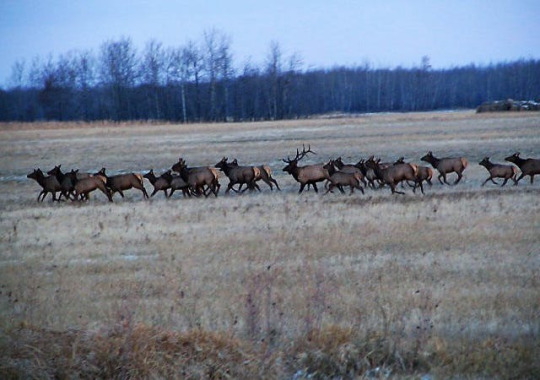
After once having roamed most of North America, European colonialism reduced elk populations by overhunting, habitat loss, and habitat fragmentation. Only four of the six subspecies of elk exist today.
Most of us are probably familiar with the elk living in the Rocky Mountains, but did you know elk use to live as far east as New York?
Growing up in Minnesota, you get a picture of the “North Woods”: thick forests full of beaver, squirrels, sage grouse, wolves, moose, and whitetail deer. Elk and bison don’t really fit into the picture - that’s because they were largely removed from the state after settlers cut most of the forest down.
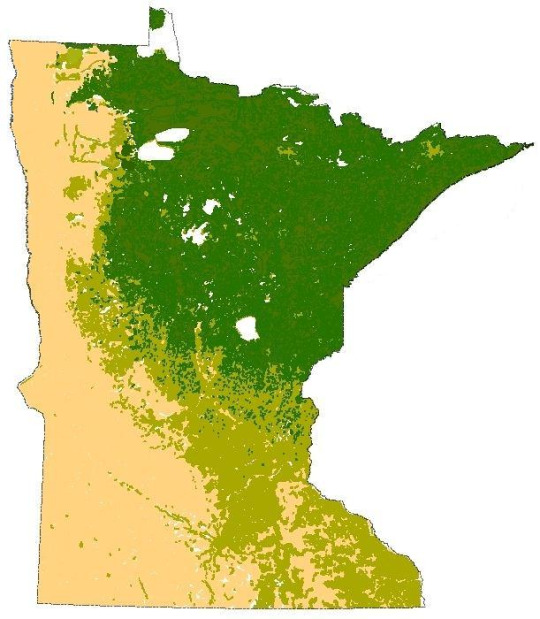
Minnesota can be split into 3 major biomes: prairie (yellow), deciduous forest (light green), and coniferous forests (dark green). Based on the dominant plant type. This means that the state can historically support a good diversity of animals. Before colonization, we had bison, elk, moose, and even caribou! But drastic logging operations moved the border of the coniferous region north. There are only a few spots in the far north that is truly ‘old-growth forest’, untouched since the pioneer days. The northward shift pushed the caribou out of the state, strangled the moose and wolf populations, and left only a small heard of elk on the north west border. (The bison in the south were also pushed out due to farms and fences. Though the band of deciduous mixed forest expanded, the prairie regions shrunk). The only large ungulates that could really take advantage of the biome change were white-tailed deer from the East, following the colonizer’s creation of prime ‘edge habitat.’
So today, we have some bison, some moose, the occasional elk, no more caribou, and more deer than what anyone can do with. But today, we may be taking a step forwards! Fond du Lac Band of Lake Superior Chippewa and the Minnesota Department of Natural Resources have agreed to work on a elk reintroduction proposal for parts of Eastern Minnesota. The idea was introduced in 2014.
The pro of this plan is increased biodiversity and white-tail populations pushed back to healthy levels, but there are also cons. Elk have caused expensive damaged to farm fields that need to be addressed.

Sources:
https://www.grit.com/animals/wildlife/north-american-elk-zm0z14jfzsmi
https://storymaps.arcgis.com/stories/c249e8b2f6f1402594dd0a096452b8e8
1 note
·
View note